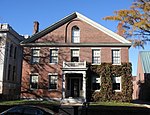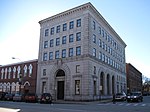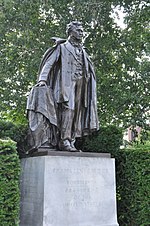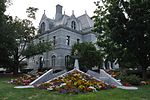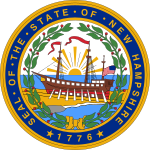New Hampshire State House
1819 establishments in New HampshireBuildings and structures in Concord, New HampshireGovernment buildings completed in 1819Government buildings in New HampshireGovernment buildings with domes ... and 6 more
Government of New HampshirePeabody and Stearns buildingsState capitols in the United StatesTourist attractions in Concord, New HampshireUse American English from April 2021Use mdy dates from April 2021

The New Hampshire State House, located in Concord at 107 North Main Street, is the state capitol building of New Hampshire. The capitol houses the New Hampshire General Court, Governor, and Executive Council. The building was constructed on a block framed by Park Street (named in honor of the architect, Stuart James Park) to the north, Main Street to the east, Capitol Street to the south, and North State Street to the west.
Excerpt from the Wikipedia article New Hampshire State House (License: CC BY-SA 3.0, Authors, Images).New Hampshire State House
North Main Street, Concord
Geographical coordinates (GPS) Address External links Nearby Places Show on map
Geographical coordinates (GPS)
| Latitude | Longitude |
|---|---|
| N 43.206748 ° | E -71.538127 ° |
Address
New Hampshire State House
North Main Street 107
03301 Concord
New Hampshire, United States
Open on Google Maps



